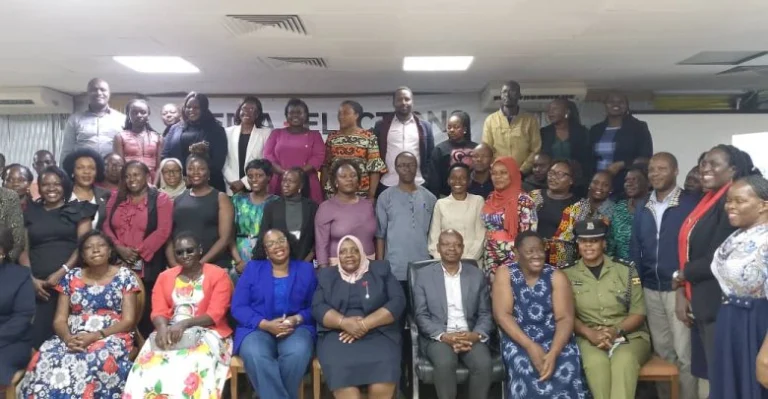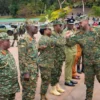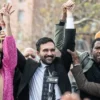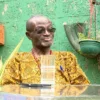As Uganda inches closer to the 2026 general elections, women’s rights advocates are sounding the alarm over what they describe as persistent underrepresentation and biased portrayal of women in both politics and the media.
Despite gradual progress in gender inclusion, female voices remain sidelined in newsrooms, political debates, and decision-making spaces — a gap many say threatens true democratic balance in the country.
Only 25% of News Features Women — Advocates Say It’s Not Enough
According to recent gender media audits, only 25% of news stories in 2023 featured women as sources, up from 20% in 2020. While that’s a modest increase, advocates say it’s still far from where Uganda should be.
“Most of the articles written by women are often censored or edited in ways that dilute their voices,” said Joyce Nalunga, an advocate and president of the Female Lawyers Network.
Nalunga added that the issue goes beyond numbers — it’s about power, visibility, and respect. “Women’s opinions often get trimmed or framed around emotions, not expertise. That needs to change if we’re serious about equality,” she said.
‘Sexist and Unfair Coverage Still Exists,’ Says MP Joyce Bagala
Mityana District Woman MP Joyce Bagala echoed those concerns, criticizing what she called “a double standard” in political coverage.
“The media has often portrayed female politicians in a sexist and unfair manner, unlike their male counterparts,” Bagala said. “Political parties have continued to offer fewer opportunities to women leaders, reflecting a persistent gender imbalance in politics.”
Her remarks have resonated with many Ugandan women online, who say sexist tropes — from questions about marital status to wardrobe choices — still dominate coverage of women in leadership.
Experts Say the Problem Is Cultural, Not Just Media-Driven
Experts warn that the issue goes deeper than newsroom decisions.
Margret Sentamu, Executive Director of the Uganda Media Women’s Association (UMWA), said that the challenge is rooted in long-standing social norms that shape how both media professionals and women leaders view themselves.
“Both the media and women politicians need a mindset shift,” she explained. “Our behavior is shaped by a culture that traditionally favors men over women — and that mindset influences how stories are told.”
Sentamu added that true progress will only come when both journalists and political institutions challenge cultural stereotypes and intentionally promote female visibility.
Media’s Power in Shaping Public Perception
In Arua, community development officer Jean Ayikoru — who works with persons with disabilities — highlighted how the media can either empower or disempower women.
“Usually, women wear the mother’s, the teacher’s, or the marketer’s mindset. Media helps amplify our successes, but it should also spotlight negative reporting that limits women’s perceived abilities,” she said.
Ayikoru noted that negative framing often overshadows women’s achievements, reinforcing harmful stereotypes that paint them as less capable or emotional leaders.
She emphasized the importance of gender-supportive laws like the Equal Opportunities Act, which she said provides a strong foundation for equality — but requires active enforcement.
“The Equal Opportunity Act widens rights for everyone. As campaigns begin, we’ve invited all stakeholders to join in ensuring gender fairness,” Ayikoru added.
‘Workshops Without Action’: Police Official Calls for Implementation
Dr. Aisha Kayongo from the Uganda Police also weighed in, stressing that while Uganda has made progress on paper, implementation remains weak.
“I’m an activist for gender. We hold workshops, but we don’t implement them,” she said. “Women’s representation is not visible because we often focus on the easy parts instead of the hard reforms.”
Her remarks highlight a key frustration among women’s rights activists — that Uganda’s numerous gender policies often lack practical follow-through, especially during politically charged election seasons.
Media Urged to Adopt a Gender Media Checklist
To address bias and promote balanced reporting, gender advocates are urging media houses to adopt a Gender Media Checklist ahead of the 2026 polls.
The checklist encourages journalists and editors to:
- Ensure equal representation of men and women as news sources
- Offer balanced airtime and coverage across political lines
- Avoid sexist framing and stereotypes in storytelling
- Highlight women’s leadership achievements as seriously as men’s
According to UMWA, this checklist could become a standard newsroom tool to improve fairness, accuracy, and inclusivity during the campaign season.
Beyond Politics: A Matter of Equality and Democracy
For Uganda’s women advocates, the fight for fair media representation goes beyond feminism — it’s about democracy and justice. They argue that equal access to the public conversation ensures a more transparent, inclusive, and accountable electoral process.
“This is not just a women’s issue,” said Nalunga. “When women are excluded from political and media spaces, we all lose. Democracy works best when everyone is seen and heard.”
Analysts say that as Uganda prepares for the 2026 elections, newsrooms and political parties alike must walk the talk by creating spaces where women can shape national narratives without bias or censorship.
The Road Ahead
Uganda has made strides in women’s representation — from a growing number of female MPs to the creation of gender desks in various institutions. But advocates insist that representation must be accompanied by respect, visibility, and authenticity.
Until then, women leaders say they’ll continue pushing for accountability — both in media houses and political offices — to ensure the next election reflects the voices of all Ugandans.
What do you think — is the media doing enough to promote women’s visibility ahead of 2026? Drop your thoughts below and share this story to keep the conversation going.





